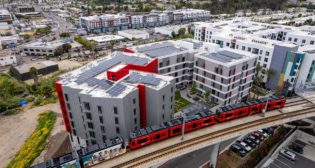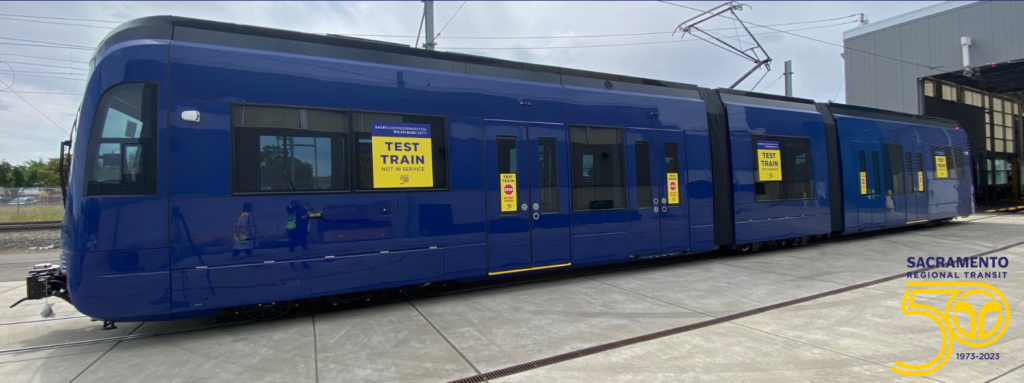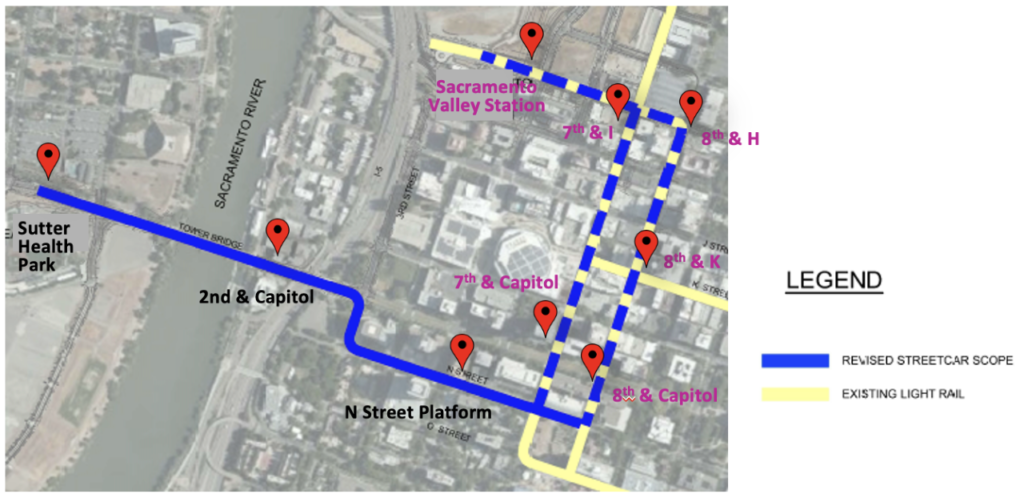
Transit Briefs: WMATA, MARTA, SkyTrain, SacRT
Written by Carolina Worrell, Senior Editor
SkyTrain workers have reached a tentative agreement with BCRTC.
The Washington Metropolitan Area Transit Authority (WMATA) launches a new real-time rail service tracking tool. Also, the Maryland Atlanta Rapid Transit Authority (MARTA) Police’s Deputy Chief returns from executive training in Israel; SkyTrain workers reach a tentative agreement with the British Columbia Rapid Transit Company (BCRTC); and the Sacramento Regional Transit District (SacRT) is awarded $35 million in funding for light rail improvements.
WMATA
WMATA announced June 30 that it is launching MetroMeter, a new tool to give customers better access to Metrorail performance information.
The tracking tool, which will “provide easy access to real-time data on headway adherence, schedule adherence, the number of trains in service, and more,” will be available to the public later this week, providing information like MetroHero, a third-party application that has become popular with customers since its launch in 2015 but will no longer be updated after July 1.
According to WMATA, MetroMeter will “complement other performance tracking tools, including quarterly reports and scorecards detailing on-time performance and customer satisfaction.” A recent survey of active Metrorail customers found 84% were satisfied with their experience, an increase of 16% compared to one year ago, the agency said. WMATA is now running more train service than at any other time in its 47-year history, with 58% more trains in service on weekdays compared to last July and 73% more train trips.
Additionally, WMATA says it is also working on real-time performance tracking tools for Metrobus and MetroAccess and will “continue to refine reporting tools available to the public based on feedback from customers.”
MARTA
MARTA Police Department Deputy Chief Pearlie McKinzie has returned to Georgia from Israel after two weeks of public safety leadership training with the country’s top police executives, the agency announced on June 29.
McKinzie was part of a 20-member delegation that partnered with the Israel Police for the Georgia International Law Enforcement Exchange’s (GILEE) 30th annual peer-to-peer executive training program. While in Israel, they were shown best practices and the latest technologies in policing and public safety. They learned more about strategies to successfully lead law enforcement programs and used community policing to build safer neighborhoods for minority communities in partnership with all community stakeholders.
The delegation included 12 Georgia police chiefs and command staff—including the Atlanta and Gwinnett public school system chiefs—three Georgia sheriffs, the director of the Georgia Bureau of Investigation (GBI), a law enforcement coordinator for the Department of Justice, the director of the Georgia Public Safety Training Center, a deputy commissioner from the Georgia Department of Public Safety and a senior law enforcement official from Tennessee.
Director Michael Register of the GBI served as Head of Delegation. GILEE Founding Director Robbie Friedmann and Associate Director Col. (Ret.) Brent Cummings led the delegation while Assistant Director Nadia Borissova managed its operations.
During their orientation, the delegates heard from several former GILEE delegates, including Chattanooga Police Chief Celeste Murphy and John King, Georgia’s Insurance and Safety Fire Commissioner, whose interest focused on the use of volunteers in support of law enforcement operations during his time in Israel. He gave the keynote address prior to their departure.
“This will be the most impactful professional experience in your law enforcement career,” King said. “This experience has forged relationships that will last a lifetime. You’re going to be exposed to something truly extraordinary. It’s important that you think now about what you’re going to bring back, how you’re going to share your knowledge. You have a responsibility to give back.”
“GILEE gives U.S. law enforcement leaders an opportunity to expand their professional perspective by visiting their peers,” Cummings said. T”hey are able to witness firsthand how their peers perform differently but also share many similarities. This broadening experience through peer-to-peer exchange makes these executives better leaders, which helps our communities receive better services.”
Nearly 1,250 law enforcement executives from the U.S. and countries around the world have graduated from GILEE peer-to-peer exchange programs during its 32 years. Additionally, almost 43,000 public safety, homeland security and police executives have attended GILEE-led special briefings, seminars, workshops, training sessions and conferences featuring experts on issues related to homeland security, public safety, community policing and law enforcement.
SkyTrain
CUPE 7000, which represents more than 1,000 workers at TransLink’s SkyTrain, announced June 30 that it has reached a tentative agreement on a five-year contract with BCRTC, following 10 days of negotiations.
According to the union, the new collective agreement features wage increases, improvements to existing language and benefits, and new contract provisions not previously bargained.
Following membership meetings over the next couple of weeks, CUPE 7000 will hold a ratification vote toward the end of July.
“I’m pleased about how the process went for this round and feel that the employer was listening to the union the whole time,” said CUPE 7000 President Tony Rebelo. “The new contract addresses our members’ top priorities around workplace issues and our benefit plan as well as making progressive improvements that reflect the diversity of our membership.”
SacRT
SacRT announced June 30 that it has been awarded two grants totaling $35 million from the California Transportation Commission (CTC) to improve the light rail system.

According to the agency, SacRT was awarded $25 million from the Solutions for Congested Corridor program to support the relocation of the light rail station and tracks at the Sacramento Valley Station to a north-south alignment as part of the Railyard Revitalization Program and the future Sacramento Downtown Riverfront Streetcar Project, which will offer rail service along 7th and 8th streets and N Street over Tower Bridge into West Sacramento. Future phases of the project include double tracking on 7th Street and a new station at Railyards Boulevard to better serve one of the nation’s largest infill development projects.

To reduce traffic congestion on Highway 50, part of the US 50 Gold Line Corridor Enhancement Project, SacRT received $10 million from the Local Partnership Program (LPP) to support modernizing the light rail station platforms along the Gold Line to meet the height requirements of the new low-floor light rail vehicles.
SacRT has secured nearly $400 million for the Light Rail Modernization Project, which includes the purchase of new low-floor trains, modifications to station platforms and adding a passing track to provide 15-minute service to Folsom area stations. SacRT has already purchased 28 vehicles from Siemens Mobility in South Sacramento and recently received funding to purchase an additional 16 new low-floor trains.
“The project to realign the SacRT light rail tracks will allow the planned Downtown Sacramento Streetcar line to use the Sacramento Valley Station,” said Sacramento Assemblymember Kevin McCarty. “That will add another mode of transit to what is already one of the busiest multimodal transit hubs in the region, and with the Railyards development nearby, it will only get busier.”
“The SacRT Board of Directors would like to thank the CTC on the recent funding recommendations that will help accelerate SacRT’s Light Rail Modernization Program,” said SacRT Chair and Sacramento County Supervisor Patrick Kennedy. “The County and SacRT’s LPP Project modernizes the Hazel Avenue, Aerojet Road, and Folsom Boulevard interchanges with US 50 to reduce congestion and improve operations and supports the 29 Gold Line light rail station platforms to accommodate low-floor vehicles coming next summer.”
“I would like to thank the CTC for funding awards that will support a shift away from single-occupancy vehicle solutions while reducing congestion and increasing mobility throughout our region,” said SacRT General Manager/CEO Henry Li. “As our region works toward its ambitious climate goals, these improvements will make it more convenient and easier to use public transit.”
More information on SacRT’s Light Rail Modernization Project is available here. More information on the Downtown Riverfront Streetcar Project is available here.



